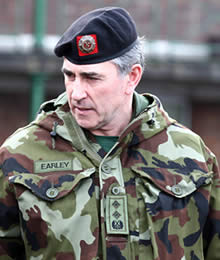 Throughout the tributes paid on the recent death of Lt Gen Dermot Earley was a reference to the former Chief of Staff’s handshake.
Throughout the tributes paid on the recent death of Lt Gen Dermot Earley was a reference to the former Chief of Staff’s handshake.
Major General Sean McCann, who succeeded General Earley as Chief of Staff of the Defence Forces, referred to latter’s handshake as his “calling cardâ€. Colleagues from the sports pitch, where he had demonstrated skills as a leader and team player, also remembered that calling card: “He had that famous handshake that made you feel that little bit more important, and you knew it was sincere…,†remarked former Roscommon Senior footballer, Seamus Hayden. There were many other memories of that handshake.
Clearly, Dermot Earley communicated so much through his handshake. It is an example of how much one can say without words; how one can express a presence; how one can exude sincerity, confidence and assuredness. The impact of his handshake remained with you long after he had left.
In a world increasingly reliant on digital communication, either socially or in a commercial context, how are we to identify and develop ways in which we can make as powerful connection with others as Dermot Earley did with his handshake? Should we expect that such a thing might be possible?
As we continue to develop new means of digital communication, perhaps we have to accept that there are elements of what we can achieve face-to-face, that can never be replicated electronically. Non-verbal communication accounts for the vast majority of how we communicate in person. To date, even the ubiquitous emoticons are poor cousins.
